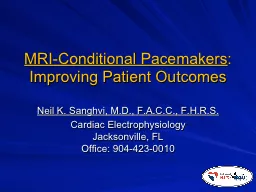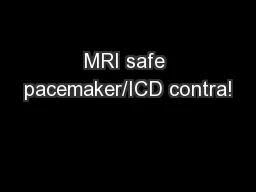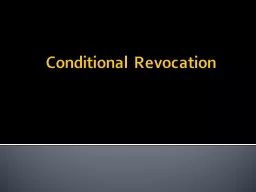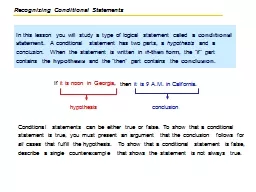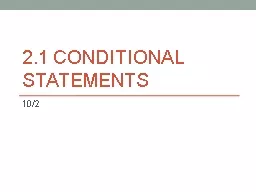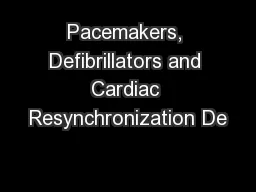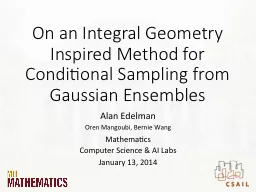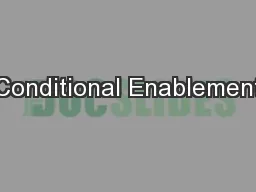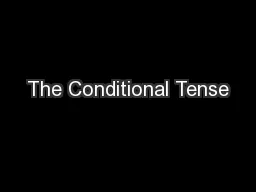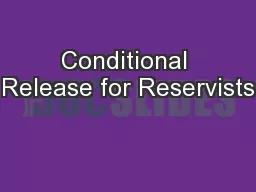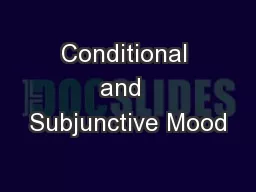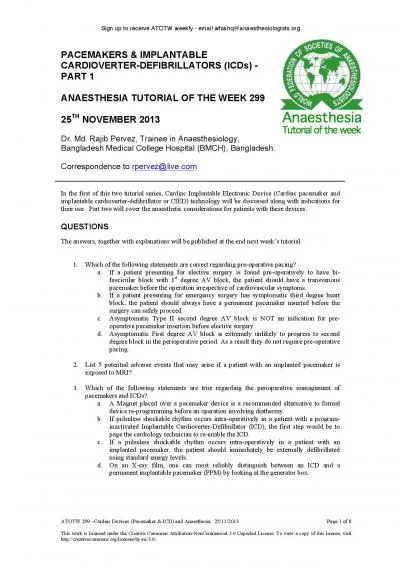PPT-MRI-Conditional Pacemakers
Author : myesha-ticknor | Published Date : 2017-05-25
Improving Patient Outcomes Neil K Sanghvi MD FACC FHRS Cardiac Electrophysiology Jacksonville FL Office 9044230010 Disclosures Received honoraria and travel expenses
Presentation Embed Code
Download Presentation
Download Presentation The PPT/PDF document "MRI-Conditional Pacemakers" is the property of its rightful owner. Permission is granted to download and print the materials on this website for personal, non-commercial use only, and to display it on your personal computer provided you do not modify the materials and that you retain all copyright notices contained in the materials. By downloading content from our website, you accept the terms of this agreement.
MRI-Conditional Pacemakers: Transcript
Download Rules Of Document
"MRI-Conditional Pacemakers"The content belongs to its owner. You may download and print it for personal use, without modification, and keep all copyright notices. By downloading, you agree to these terms.
Related Documents

